Filter by
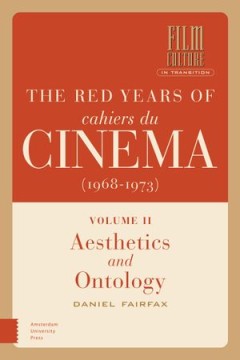
The Red Years of Cahiers du Cinéma (1968-1973), Volume II: Aesthetics and On…
The uprising which shook France in May 1968 also had a revolutionary effect on the country's most prominent film journal. Under editors Jean-Louis Comolli and Jean Narboni, Cahiers du cinéma embarked on a militant turn that would govern the journal's work over the next five years. With a Marxist orientation inspired by the thinking of Louis Althusser, Jacques Lacan and Roland Barthes, the ""re…
- Edition
- -
- ISBN/ISSN
- 9789048543915
- Collation
- -
- Series Title
- -
- Call Number
- 791.43 FAI r
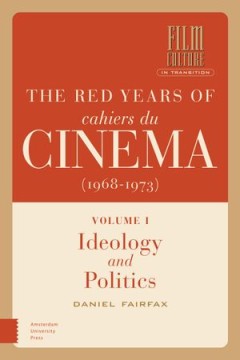
The Red Years of Cahiers du Cinéma (1968-1973), Volume I
The uprising which shook France in May 1968 also had a revolutionary effect on the country's most prominent film journal. Under editors Jean-Louis Comolli and Jean Narboni, Cahiers du cinéma embarked on a militant turn that would govern the journal's work over the next five years. With a Marxist orientation inspired by the thinking of Louis Althusser, Jacques Lacan and Roland Barthes, the "red…
- Edition
- -
- ISBN/ISSN
- 9789048543908
- Collation
- -
- Series Title
- -
- Call Number
- 791.43 FAI r

How Mobile Robots Can Self-Organise a Vocabulary
One of the hardest problems in science is the symbol grounding problem, a question that has intrigued philosophers and linguists for more than a century. With the rise of artificial intelligence, the question has become very actual, especially within the field of robotics. The problem is that an agent, be it a robot or a human, perceives the world in analogue signals. Yet humans have the abilit…
- Edition
- -
- ISBN/ISSN
- 9783946234012
- Collation
- -
- Series Title
- -
- Call Number
- -
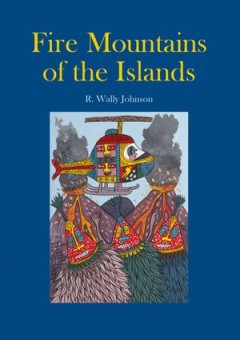
Fire Mountains of the Islands A History of Volcanic Eruptions and Disaster M…
Volcanic eruptions have killed thousands of people and damaged homes, villages, infrastructure, subsistence gardens, and hunting and fishing grounds in Papua New Guinea and the Solomon Islands. The central business district of a town was destroyed by a volcanic eruption in the case of Rabaul in 1994. Volcanic disasters litter not only the recent written history of both countries—particularly …
- Edition
- -
- ISBN/ISSN
- 9781922144225
- Collation
- -
- Series Title
- -
- Call Number
- -

The Environmental Impact of Sieben Linden Ecovillage
The present study was born out of an agreement between the Sieben Linden community (Siedlungsgenossenschaft Ökodorf e.G.) and the Politecnico di Torino (DIST), approved on May 9, 2013. The Politecnico team, led by professor Andrea Bocco, intended to perform an overall analysis of the way of living in the ecovillage, including a number of areas among which are agriculture, biodiversity, buildin…
- Edition
- -
- ISBN/ISSN
- 9780367145644
- Collation
- -
- Series Title
- -
- Call Number
- -

Chapter 8 The Status and Role of the alpine Cryosphere in Central Asia
The alpine cryosphere including snow, glaciers and permafrost are critical to water management in the Aral Sea Basin (ASB) and larger Central Asia (CA) under changing climate: as they store large amounts of water in its solid forms. Most cryospheric components in the Aral Sea Basin are close to melting point, and hence very vulnerable to a slight increase in air temperature with significant con…
- Edition
- -
- ISBN/ISSN
- 9781138348882
- Collation
- -
- Series Title
- -
- Call Number
- -
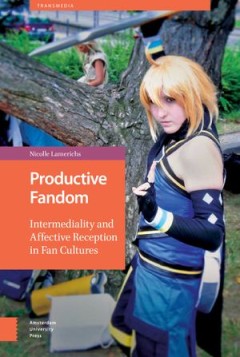
Productive Fandom
This book offers a media ethnography of the digital culture, conventions, and urban spaces associated with fandoms, arguing that fandom is an area of productive, creative, and subversive value.
- Edition
- -
- ISBN/ISSN
- 9789089649386
- Collation
- -
- Series Title
- -
- Call Number
- 791.43 LAM p

Post-Cinema: Cinema in the Post-art Era
Post-cinema designates a new way of making films. It is time to ask whether this novelty is complete or relative and to evaluate to what extent it represents a unitary or diversified current. The book proposes to integrate the post-cinema question within the post-art question in order to study the new ways of making filmic images. The issue will be considered at three levels: the impression of …
- Edition
- -
- ISBN/ISSN
- 9789048551941
- Collation
- -
- Series Title
- -
- Call Number
- 791.43 POS p
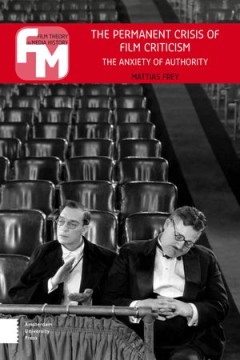
The Permanent Crisis of Film Criticism. The Anxiety of Authority
Film criticism is in crisis. Dwelling on the many film journalists made redundant at newspapers, magazines, and other 'old media' in past years, commentators have voiced existential questions about the purpose and worth of the profession in the age of WordPress blogospheres and proclaimed the 'death of the critic'. Bemoaning the current anarchy of internet amateurs and the lack of authoritative…
- Edition
- -
- ISBN/ISSN
- 9789089647177
- Collation
- -
- Series Title
- -
- Call Number
- 791.43 FRE p

Animal Acts Performing Species Today
We all have an animal story—the pet we loved, the wild animal that captured our childhood imagination, the deer the neighbor hit while driving. While scientific breakthroughs in animal cognition, the effects of global climate change and dwindling animal habitats, and the exploding interdisciplinary field of animal studies have complicated things, such stories remain a part of how we tell the …
- Edition
- -
- ISBN/ISSN
- 9780472901104
- Collation
- -
- Series Title
- -
- Call Number
- -
 Computer Science, Information & General Works
Computer Science, Information & General Works  Philosophy & Psychology
Philosophy & Psychology  Religion
Religion  Social Sciences
Social Sciences  Language
Language  Pure Science
Pure Science  Applied Sciences
Applied Sciences  Art & Recreation
Art & Recreation  Literature
Literature  History & Geography
History & Geography